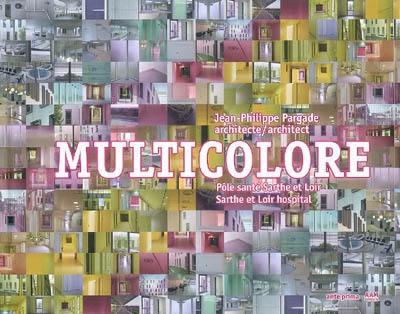
Paru le 03/04/2008 | Relié 80 pages
Tout public
Concevoir un hôpital du XXIe siècle est une ambition primordiale. L'implanter « en pleine prairie » est un pari, celui d'une création de toutes pièces qui se doit d'être exemplaire.
L'architecte Jean-Philippe Pargade réalise un projet novateur pour le pôle santé Sarthe et Loir (300 lits) qui remplace et regroupe les anciens hôpitaux des villes de Sablé et de La Flèche. Cet hôpital paysage, à l'architecture horizontale, constitue une des premières réalisations organisées en réseau. De larges plateaux continus percés de grands et petits patios, irrigués par une artère centrale, permettent une grande souplesse de fonctionnement et offrent des possibilités infinies pour les générations futures.
Illustré de très belles images, ce livre exprime la relation forte du paysage et du bâtiment qui s'exaltent l'un l'autre, témoigne de l'efficience de ce concept rendu sensible par la simplicité de sa géométrie architecturale et par la mise en couleur des espaces intérieurs par l'artiste américain Gary Glaser.
It almost goes without saying that the design of a new hospital must be able to adapt to the changing needs of the 21st century.
To place such a structure out in the countryside, surrounded by fields, was a challenge - the creation of an all-inclusive complex that by definition had to be flawless. The architect, Jean-Philippe Pargade, has created an innovative project for the Sarthe et Loir hospital (300 beds) that replaces and amalgamates the hospitals that formerly served the towns of Sablé and La Flèche. The horizontal architecture of this hospital environment is one of the first constructions of its type to be organised as a networked system. Extensive continuous floor levels pierced by large and small patios and served by a central artery provide a high level of operational flexibility while offering future generations an infinite number of organisational possibilities.
With its attractive photos and illustrations, this book expresses the strong and complementary relationship between landscape and building. It reveals the efficiency of the design concept which is made all that much more attractive through the simplicity of its architectural geometry and the colour treatment of the interior spaces by American artist Gary Glaser.